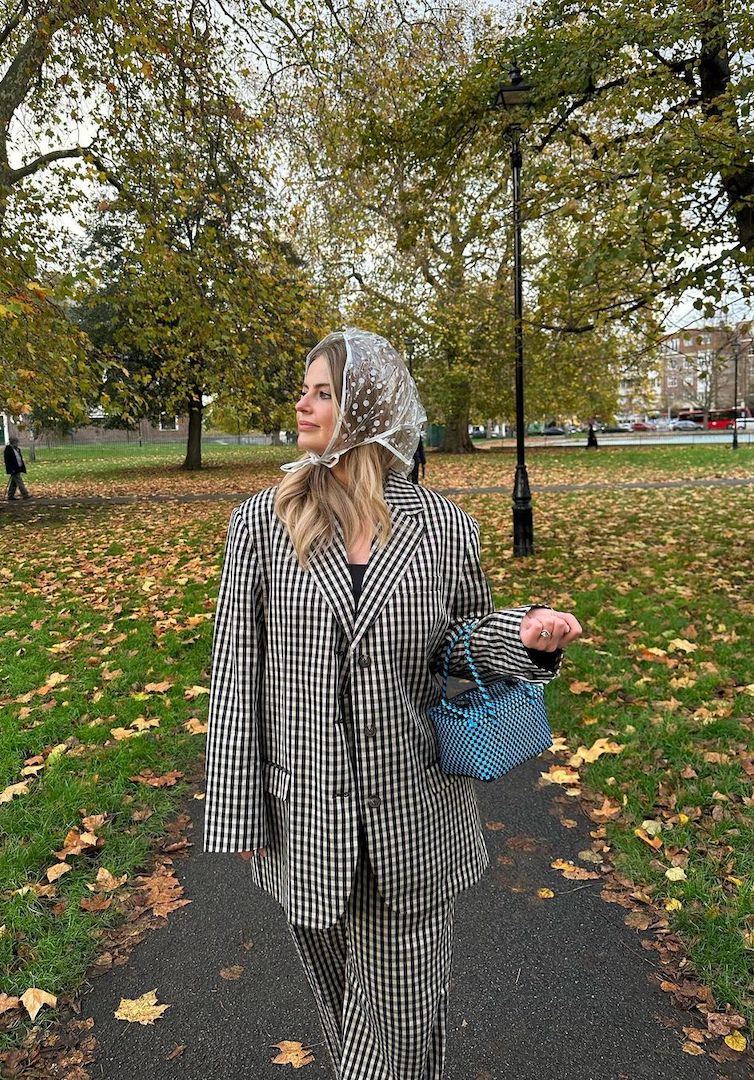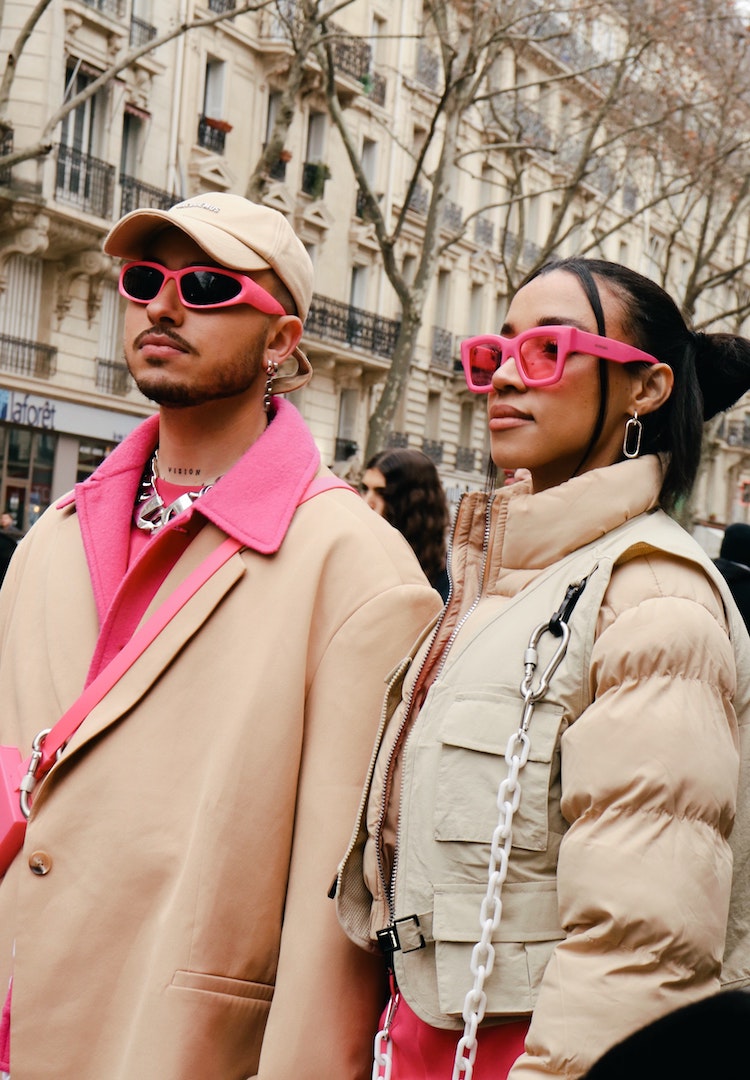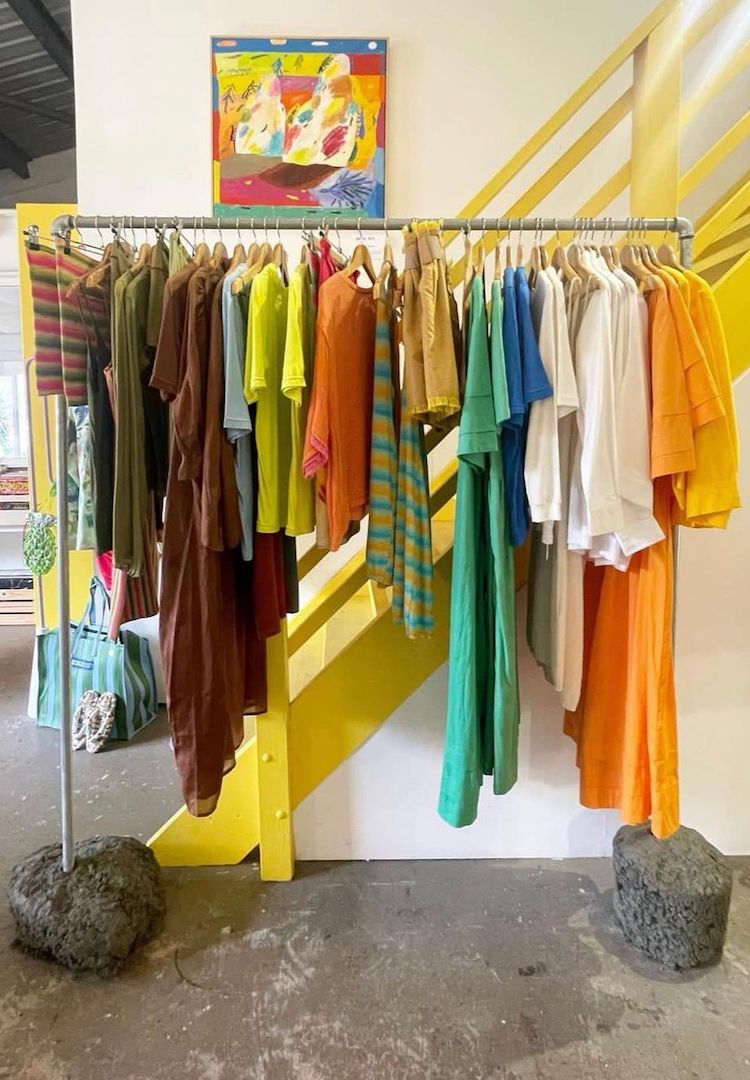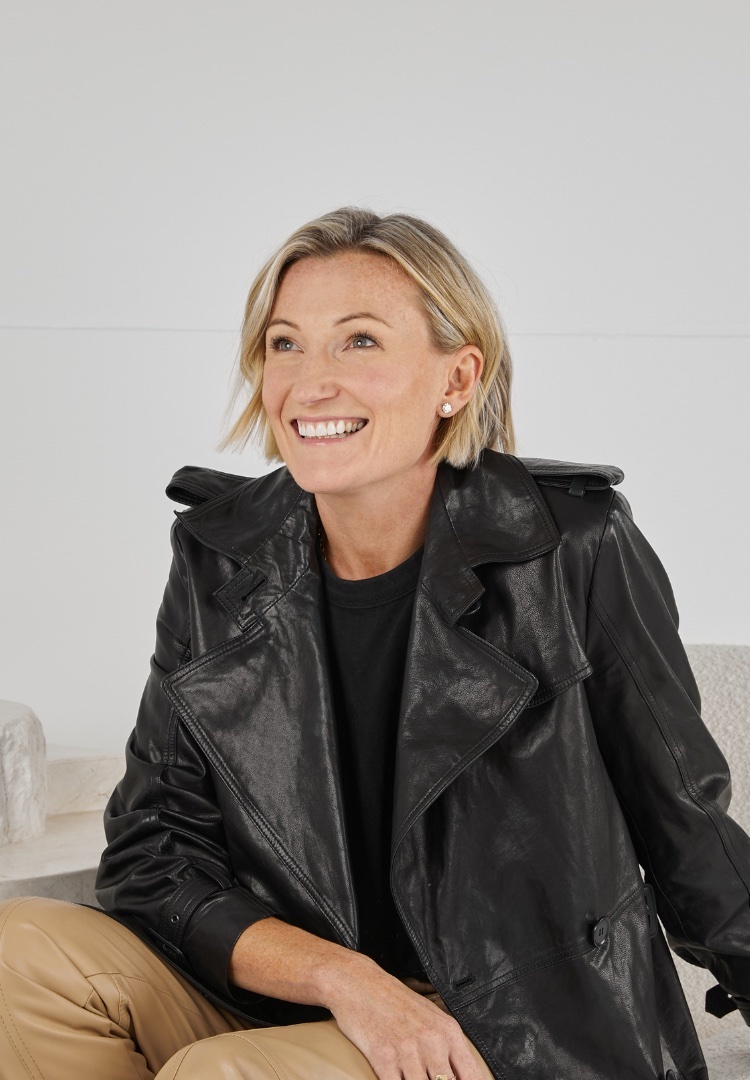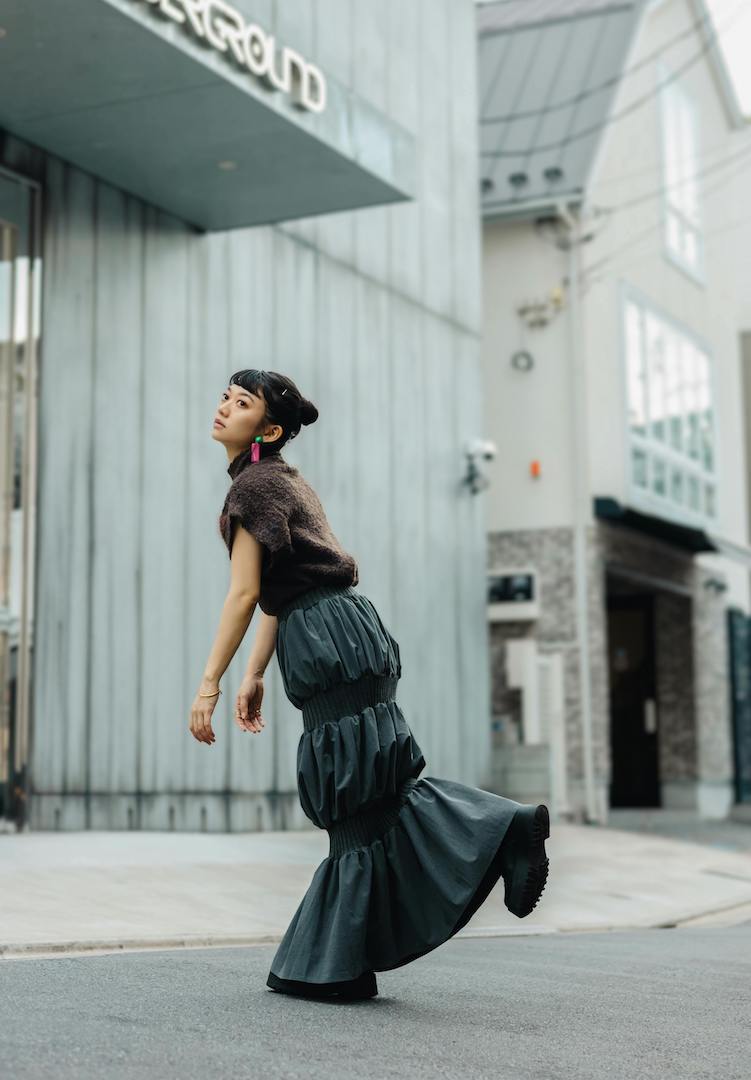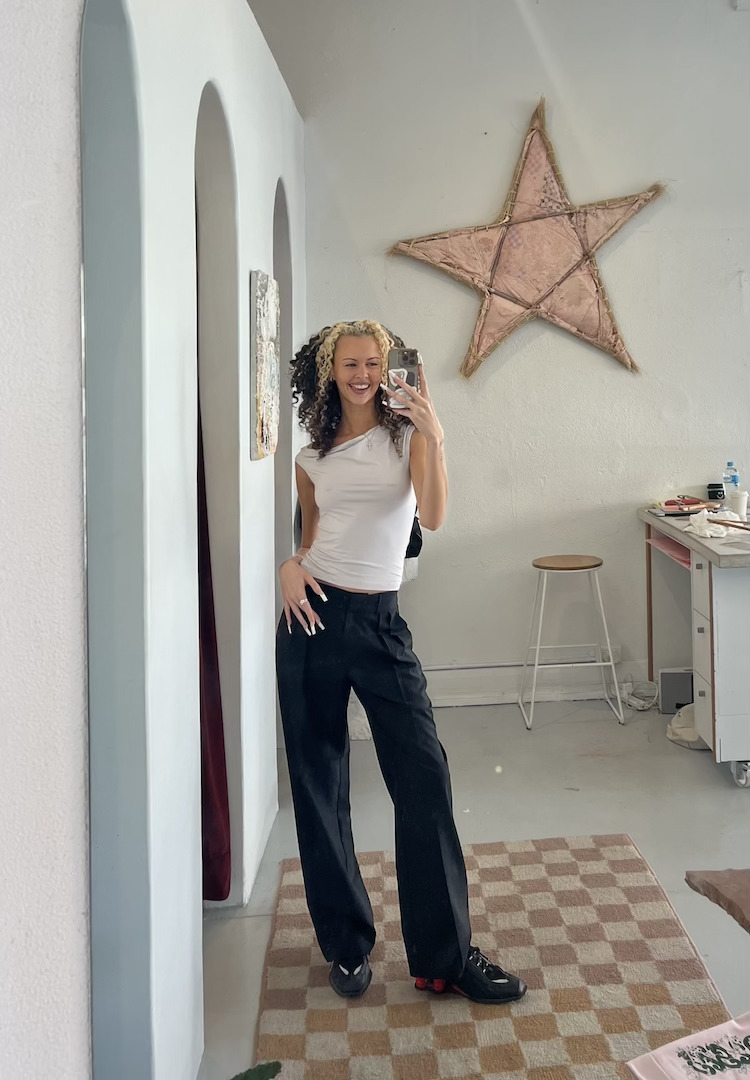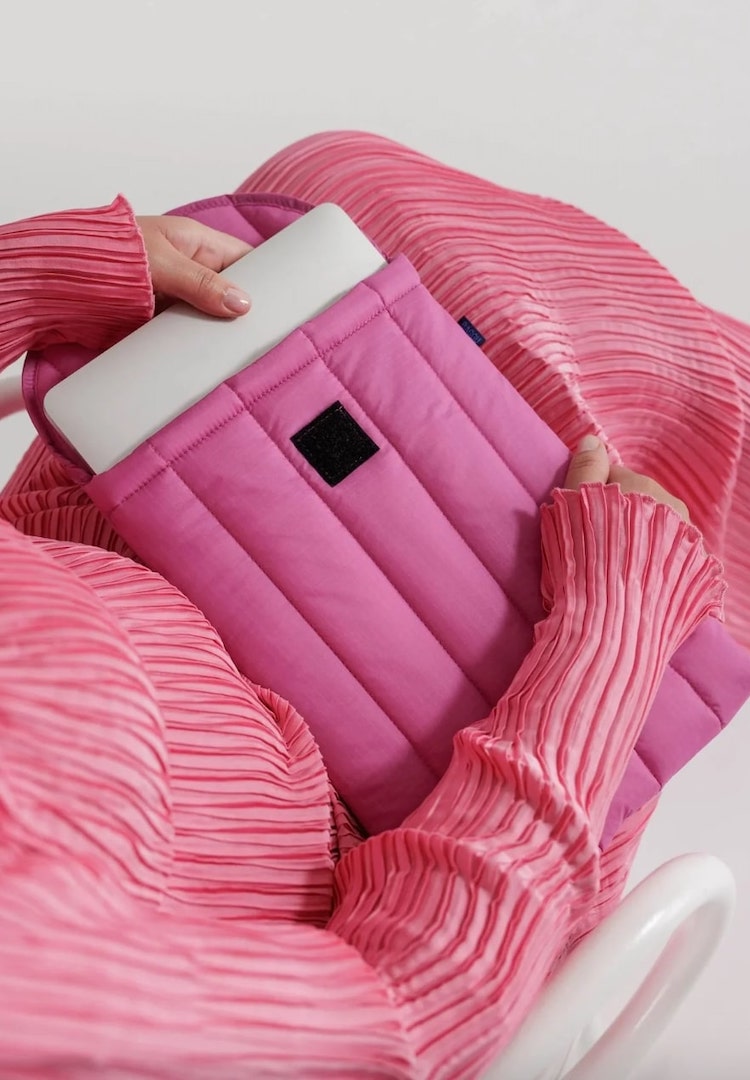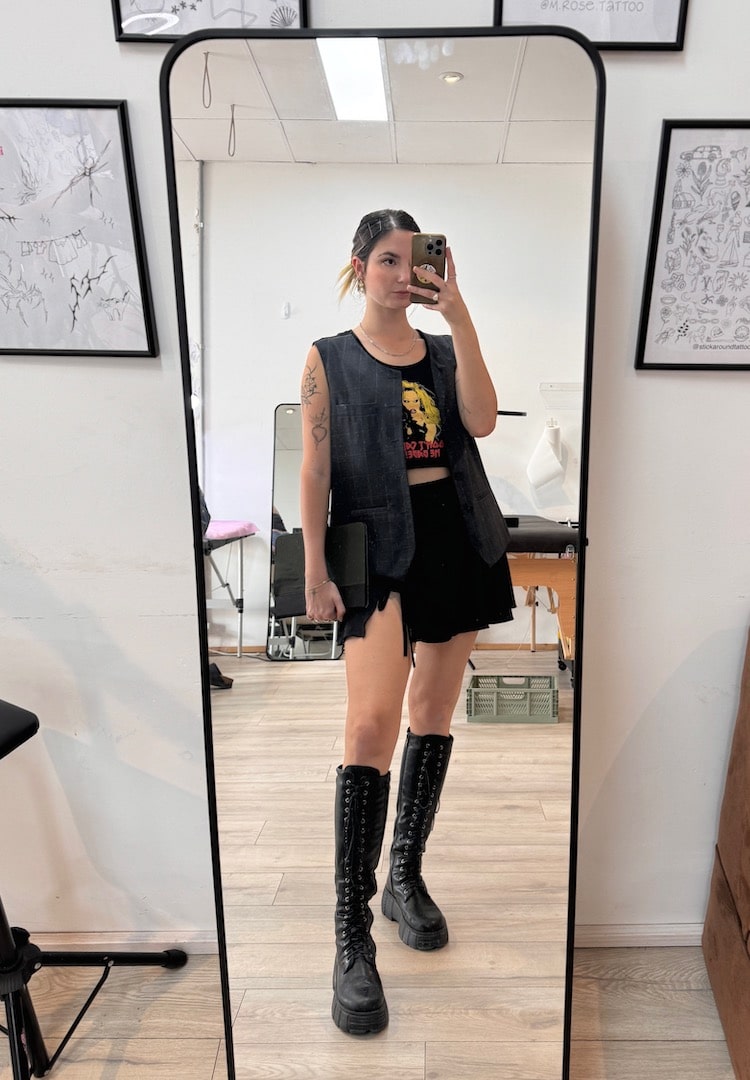Surveillance-core: Why are we okay filming the outfits of strangers?
WORDS BY ELIZA SHOLLY
Are we removing the person from their clothes, or admiring the person within them?
If you’re like me and are constantly questioning what you see online, then there’s one fashion-centric video phenomenon that may have plagued your algorithm recently. Usually on TikTok (and Instagram reels three months later), these videos are all relatively similar in execution: lo-fi and handheld in their capture, inconspicuously documenting everyday street style from around the globe.
Accounts like Parisiens of Paris and Second Hand Huns do well for obvious reasons – they’re chronicling the street style of aspirational cities like Copenhagen, New York, Stockholm and Dublin. But, if you type a location into your search bar on TikTok or Instagram, followed by ‘what people are wearing’, you’ll quickly find an infinite scroll from cities all around the world.
For more fashion news, shoots, articles and features, head to our Fashion section.
There’s Bangalore, India featuring colourful modesty and friendly faces and kawaii queens in Tokyo. Even cities like Austin, Texas are getting a shoutout. Closer to home, there’s photographer and street style aficionado Liz Sunshine from Street Smith Agency and the shortlived (but influential) account Melbourne Fashion. Not even this very publication is safe. While the actual location of the content is different, all replicate the same formula, racking up millions of views in the process.
In June 2021, Grace O’Neill interviewed the anonymous person behind Parisiens of Paris for Vogue UK. At the time, the account had 375,000 followers. It now has 825,000. One of the most interesting parts of the piece, for me at least, was the point that “the account’s popularity has coincided with a growing apathy towards social media culture”. Since the birth of Instagram over 10 years ago, we’ve seen the fashion internet evolve into one that favours candid authenticity over carefully chosen grid posts.
In the early days, only the most well-lit, highly-curated (and generally thin, White and able-bodied) people were granted access to online fashion fame and success. Their feeds replicated editorial magazines, complete with high production value, impossibly perfect backdrops and clothes with eye-watering price tags. But, as both the platform and society have evolved, the polished facades have eroded, paving the way for anyone with great personal style to cultivate a dedicated audience.
With this shift, so too has come the rise of these documentarian-style Instagram accounts, helmed by people who (sometimes) anonymously hide in plain sight. In Australia, they capture a well-dressed stranger outside the Art Gallery of NSW, or on Victoria’s State Library forecourt, dodging pigeons and skateboarders.
I get the allure, of course. As a concept, street style belongs to everyone. While runways and red carpets have traditionally been reserved for A-listers and off-duty models, those just moving from A to B epitomise the democratisation of fashion.
‘That could be me,’ you think as you watch these people pass you by, their clothes representing a future version of yourself that’s within reach, perhaps with clothes that already live in your closet. I think that’s the real human truth that formulates the success of these accounts – people love people watching, but not actually engaging with those they admire.
Surveillance or outfit appreciation?
Now, this is the part of the piece that turns from journalistic analysis to opinion, as I find myself looming over the surveillance versus outfit appreciation conundrum that plagues me when I scroll these accounts. As we move deeper into a world where these practices are rewarded, the filming of unconsenting strangers in public is a thin, precarious line.
Under Australian law, you’re generally entitled to film in a public space without anyone’s consent. But just because someone leaves the house in a well-dressed outfit, does that eradicate their right to anonymity? Yes, they chose to enter the public domain, but is it now completely okay for them to then be used as an online-only, fashionable ambassador for their city? A vehicle for someone else to amplify their social following; someone cosplaying as a fashion documentarian simply because they deem it to be true. What if the person they filmed had chucked a sickie that day!?
When I look at videos like Liz Sunshine’s – a long-time purveyor of street style in the Australian media – it feels obvious to me that she’s pausing her documentation to ask for approval from her subjects. Usually signalled by a shy smile or a glance at the camera, it feels adorable to me that people have consented to be recognised for just going about their day-to-day lives. Gaining her subject’s consent and her familiarity with these types of interactions is likely what separates her from others who participate in this same posting process.
But that’s when we come back to a human truth: people love people watching, but not actually engaging with those they admire. The surveillance of outfits is okay, justifiable even, because we’re celebrating the clothes. The videos are almost always taken from the back or from far away, so the person wearing them isn’t at all engaging in the process. But when watching these videos I have one simple question: are we admiring the person within the clothes, or removing the person from their clothes completely?
For more on the rules of street style, head here.

